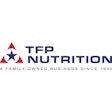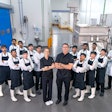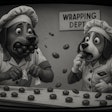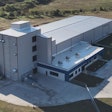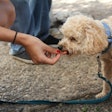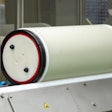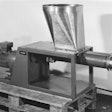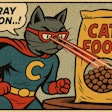At Global Pet Expo (GPE) 2009, held in Orlando, Florida, USA, in February, the dreaded "R word"-recession-reverberated in the aisles and meeting places, just as it has in every gathering place lately. But in this case it was accompanied by another R word: resistant. As in, can we believe what we hear about the pet industry being recession resistant?
The American Pet Products Association (APPA), organizer of GPE, was pushing this line hard, claiming the number of booths this year was even with GPE 2008 and the number of retail buyers was up 10%. Very few exhibitors or attendees seemed to believe either claim, judging by simple observations of the show floor. But APPA did have some solid data to back its headlines about a robust and resilient industry.
More spent on petfood
In a preview of its 2009-2010 APPA National Pet Owners Survey , the association announced that overall US pet spending totaled US$43.2 billion for 2008, up almost 5% from 2007's total of US$41.2 billion. As usual, petfood was the largest segment at US$16.8 billion, representing a 3.7% increase from 2007, which ended at US$16.2 billion. (APPA's petfood figures are lower than those from Packaged Facts; see "Market Report")
Survey respondents reported spending US$229 on dog food and US$203 on cat food for the previous 12 months (namely, 2008). This compares to US$217 spent on dog food and US$188 on cat food in 2006, the last time the survey was conducted.
Realistic projections?
Perhaps even more heartening, APPA projects that this year the US pet industry will grow nearly 5%, to a total of US$45.4 billion, with US petfood sales growing 3.6% to US$17.4 billion by the end of 2009. During a press conference, Bob Vetere, president of APPA, said he believes petfood and treats will be the leading edge of a recovery from any slowdown the pet industry may be experiencing.
APPA bases its projections on recent trends. For example, veterinary services is the fastest-growing segment of the US pet industry, with nearly 10% growth in each of the last three years. In 2007, it overtook pet care supplies as the second largest industry segment (petfood being first). APPA projects veterinary care to grow another 10% this year.
I've heard recent anecdotal reports that companion animal veterinarians in the US are seeing their revenues decline. A study by Brakke Consulting at the end of 2008 showed some US pet owners were cutting back spending, including on petfood and veterinary services, as a result of the recession. But according to a poll DVM Newsmagazine took at the end of last year, 60.4% of responding veterinarians have seen their accounts receivables remain the same over the past six months, while another 20% have seen an increase.
Thank humanization
This often conflicting information may be reconciled by the most important driver behind the industry's growth the past few years: humanization. Vetere mentioned several consumer opinion polls showing that US pet owners are willing to sacrifice spending on themselves before they spend less on their furry "kids." One poll came from ShopSmart magazine last year, which said female shoppers are more likely to buy cheaper brands of everything from medication to milk than switch to less-expensive petfood and pet care items.
In a February article in Advertising Age magazine, Bill Pearce, Del Monte's senior VP/chief marketing officer, said that because of such research, the company is increasing marketing for several of its petfood brands. "Petfood is one of the things that [consumers] can tell you, I will change what I feed my family before I change what I feed my dog,'" he said.




.png?auto=format%2Ccompress&fit=crop&h=167&q=70&w=250)
.png?auto=format%2Ccompress&fit=crop&h=167&q=70&w=250)
.png?auto=format%2Ccompress&fit=crop&h=167&q=70&w=250)
